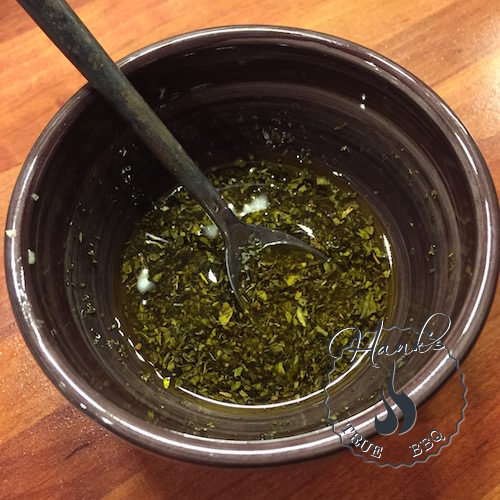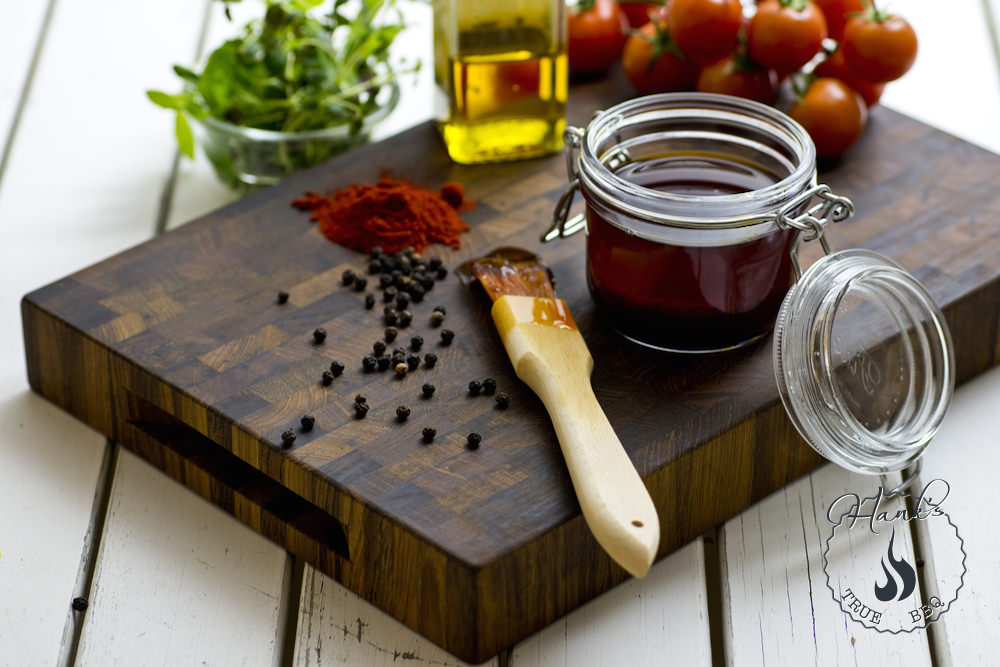There are many ways of prepping food: marinading, injecting, rubbing, basting, glazing. Why do you do it, how, when and why? Well, the why is easy. We want to add flavor. Here’s a quick guide.
Before
This is where marinades and rubs come into the picture.
Marinades
A marinade is typically some fluid with one or more spices. The meat is submerged in the fluid in a plastic bag, and left to rest one or more hours before cooking. The reason for marinading is usually to add flavor, but can also be used to tenderize the meat, depending on ingredients used. Think of how a Ceviche is made, where citrus juices tenderize the meat.
Example marinades
Pork goes well with citrus flavors. Try mixing equal parts (2 tbsp) vegetable oil and lemon juice, and marinate for one hour. For lamb: mix vegetable oil with some chopped rosemary.
Rubs
Rubs is a collective name for a (typically dry) spice mix that is sprinkled on the meat before cooking. You simply dust the spice mix or rub all over the meat, and usually give it a light press with your hands to make the spices stick to the surface of the meat. Despite its name, avoid rubbing with your hands. Just press lightly with your palm.
Applying a rub
Make sure the meat is dry. If it isn’t, pat it dry with a paper towel. To apply a rub it helps (but isn’t necessary) if you use either a neutral vegetable oil or mustard. Avoid olive oil, it burns easily at higher temperatures. If you don’t like mustard, don’t worry, the mustard flavor is very subtle when you’re done. Cover the entire surface of the meat with a very thin layer of oil or mustard. I tend to use oil for beef and mustard for pork. In both cases the oil (which is in mustard also) helps extract and distribute flavors from the spices. Dust the meat with the rub, it will stick to the oil/mustard surface. The disadvantage to using oil or mustard is that it can sometimes form a crust in itself which easily comes off the meat, leaving the meat with no flavors at all.
Example rubs
The best examples are the ones you can buy in the supermarket. If you want to make your own, a good base contains salt, onion powder, garlic powder, smoked paprika powder and some brown sugar. For pork, sugar is a common ingredient. Beef rubs tends to use less sugar, or none at all. A great starter rub for beef is known in Texas as a “Dalmatian rub”, or black & white rub. It consists of black pepper and salt. Use a 2:1 ratio of black pepper and salt, i.e. twice the amount of black pepper versus salt. Or, if you are using kosher salt, use a 1:1 ratio.
Injections
Injection refers to adding a liquid using an injection needle. Injection does two things:
- Add (overcompensate with) fluid to the meat, for maximum moisture
- Add flavor inside the meat
Typically only certain cuts of red meat are injected, like brisket, pork butt, turkey and sometimes chicken. Most meat can’t hold that much extra fluid. Remember that it consists of 70% water to begin with.
Applying an injection
Applying an injection is done using an injection needle. If you buy one, make sure the needle is sharp, and that two different size needles are included. You will need it. When injecting you do so by inserting the needle at an angle in a grid pattern, typically with an inch between each insertion point. You inject the fluid into the meat until it starts to leak out via the needle or other place. You create little pockets of fluid in the meat.
- Fill the syringe with the injection fluid.
- Push the needle all the way into the meat.
- Inject the fluid slowly and steadily until fluid starts to leak.
- Pull the needle out, move it to the next spot and repeat.

Example injections
For red meat I would recommend beef bouillon, feel free to add spices if you like. Injecting with Coca cola is not uncommon in the southern style of BBQ. I prefer to avoid sugar in the meat. If I want sweet I’d rather caramelize the surface later. For chicken I use a lemon/syrup mixture, consisting of equal parts fresh lemon juice and a plain syrup (50% water, 50% sugar). For turkey melted butter is superb. Melt butter in a pan, then let it cool off, and inject it. This is where you need the thicker needle.
During
Basting or spraying
Basting or spraying is a common treatment when cooking. The main purpose is to keep the meat moist, but also to add flavor and/or sugar as a coating. Basting is carried out with some kind of food brush. When you do this, be sure to go easy, you don’t want to brush off the rub already there. Spraying is common when grilling. You put the fluid (it is always a fluid) in a small spray bottle and spray the meat a few times on regular intervals. When grilling or smoking meat the fluid is often sugar based, to help with caramelization of the surface. I tend to use concentrated apple juice.
Example bastes
Either plain water, beef broth or apple juice, depending on what you want to accomplish.
After
There are two ways to do the ‘after’ treatment when cooking; glazing, and using resting butter. The main difference is that glazes have a lot higher sugar content, to help with caramelization.
Glazing
Glazing is just what it sounds like; you apply a thin sugar coating, over high heat. The sugar mixes with meat juices and spices, and is caramelized over high heat. This gives a very appealing dark brown surface, as well as provide great flavor. A glaze is some kind of barbeque sauce that is high in sugar. More often than not you can just use plain honey, brown sugar or syrup directly on the meat surface.
Example glazes
There are many available in the supermarket, but I tend to use either brown sugar sprinkled on top, plain honey or concentrated apple juice. You can also make your own sweet bbq sauce, here’s a good recipe.
Board sauce/Resting butter
This is a classic restaurant trick to add flavor in the very last minute. When you let the meat rest some of the juices will ‘leak’. These are mixed (directly on the cutting board) with melted butter or vegetable oil and spices, to give it that extra touch. This works really well, and is definitely something you should try.

Example resting butter
Place one tablespoon of room temperature butter on the cutting board. Rub in some spices you like. Use chopped garlic, rosemary, thyme or whatever you feel goes well with the cut of meat you’re cooking. Mix it up with a fork. Place the steak on top of the butter mix, and “rub it in”. Flip the steak and repeat. Let it rest for 5 minutes. Serve!
Example board sauce
Do exactly as above, but use oil instead of butter.

